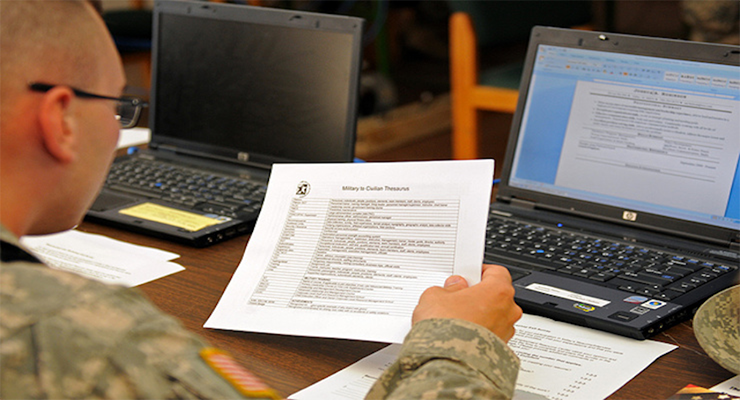Letting Go of Tradition: Universal Instructional Design for Adult Learners
The words “college student” evoke an image of a fresh-faced youth, eager to take in their first years of independence in the dorms of a university, and pursue their education to begin a career. Indeed, the description of a “traditional” student is a first-time college attendee under 25 years of age, financially dependent upon parents, living on campus and taking courses full-time (National Center for Education Statistics; Silver, Bourke, & Strehorn, 1998).
Pedagogical practices, course objectives, and instructor assumptions tend to focus on the presumed needs and abilities of traditional students. These assumptions have failed to serve students from rural communities, without high school diplomas, with disabilities, with children, with careers, and from countries outside the US, even when they meet the traditional criteria. Additionally, students with a history of military service, students seeking a second degree, or those who are not degree-seeking often do not have their unique needs considered in traditional course design.
This outmoded “college student” concept is a significant limitation to instructor efficacy considering that as few as 16% of current college students can be considered “traditional” (Scott, Loewen, & Funckes, 2003; Silver, Bourke, & Strehorn, 1998).
Compounding this issue is the tendency of non-traditional students to seek out online instruction to fit their geographic, demographic, and professional/personal time management needs (Palletier, 2010).
Discussion of a false dichotomy of traditional versus non-traditional appears to be counter-productive. So, what if the collective academic “we”, instead, focus on building accessibility, inclusivity, and adaptability into our instruction via principles of universal instructional design?
Architecture supplies the framework for universal design as a solution for functional design that meets the accessibility needs of individuals with disabilities. For educational purposes, universal instructional design creates learning spaces to be accessible by as many people as possible, to as great an extent as possible, without the need for retrofitting content on an individual student basis.
When considering applying similarly universal design principals in the learning environment, particularly online, the primary objectives are to provide clear, concise, and organized content presented in a way that is accessible to students across multiple learning styles and diverse learning needs (Scott, Loewen, & Funckes, 2003).
Examples of universal instructional design choices include short overview videos or lesson highlights, interactions with other students designed to integrate course concepts into practice (rather than restate facts from readings), providing text descriptions of images, and selecting videos with captions. Designing course content to include study guides, vocabulary review, testing in the same manner as teaching, and providing additional resources for learning has been reported to increase student engagement and course retention regardless of demographics and learning needs (Pelletier, 2010; Scott, Loewen, & Funckes, 2003; Silver, Bourke, & Strehorn, 1998).
Incorporating universal instructional design principles can be intimidating, particularly when instructors are first engaging with online education. The University of Arkansas at Little Rock has created the “Ten Steps Toward Universal Design of Online Courses” to get instructors started. Here are some key points to reiterate from this resource that are easy to implement:
- Provide simple, consistent navigation. Reducing the number of places students can access course content eliminates confusion and the risk of dead links or other pitfalls of online education that detract from learning (and teaching).
- Use color with care. Using shades of the same color, or colors close to one another on the color wheel does not provide adequate contrast for students with color blindness, or for those printing images with a black and white printer. Use symbols or simple patterns when possible to differentiate shapes or elements of graphics.
- Make sure text is easily readable. The use of text effects should be minimal. Aside from distracting the reader and reducing emphasis rather than enhancing, the use of multiple text effects (highlighting bold and italicized text in the same sentence, for instance) can be difficult for screen reading programs to convey accurately.
Many of these approaches are covered in ASU Online Master Class for Teaching Online, implemented in the ASU Online Canvas course template, and supported by ASU Online Instructional Designers. The Disabilities Resource Center (DRC) is available as well. Instructors have the resources they need to create a learning environment inclusive of all adult learners.
It may initially seem that universal instructional design hampers instructor creativity or personality, provides students with too much handholding, or reduces student accountability. However, when students are provided with the highest degree of consistency, accessibility, diverse learning content, and a responsive and adaptable instructor, the expected standards for course performance can be raised for all students.
For students who may have unique learning needs, or complex emotional relationships with course content, universal instructional design can create a space where students are not stigmatized or feel as though they are required to engage with content in a way that can create unnecessary and unproductive stress.
Proactive elimination of barriers to student success embraces ASU’s charter to be comprehensive, diverse, and committed to the communities we serve. It is a tangible commitment to celebrating who we include, instead of who we exclude. References and Resources
References and Resources
- Pelletier, S.G. (2010). Success for adult students. Public Purpose. Fall 2010.
- Scott, S.S., Loewen, G., & Funckes, C. (2003). Implementing Universal Design in higher education: Moving beyond the built environment. Journal of Postsecondary Education, 16(2), 77-89.
- Silver, P., Bourke, A., & Strehorn, K. C. (1998). Universal instructional design in higher education: An approach for inclusion. Equity & Excellence in Education, 31(2), 47-51. doi:10.1080/1066568980310206
- National Center for Education Statistics. (nd). Definitions and Data. Retrieved from https://nces.ed.gov/pubs/web/97578e.asp



